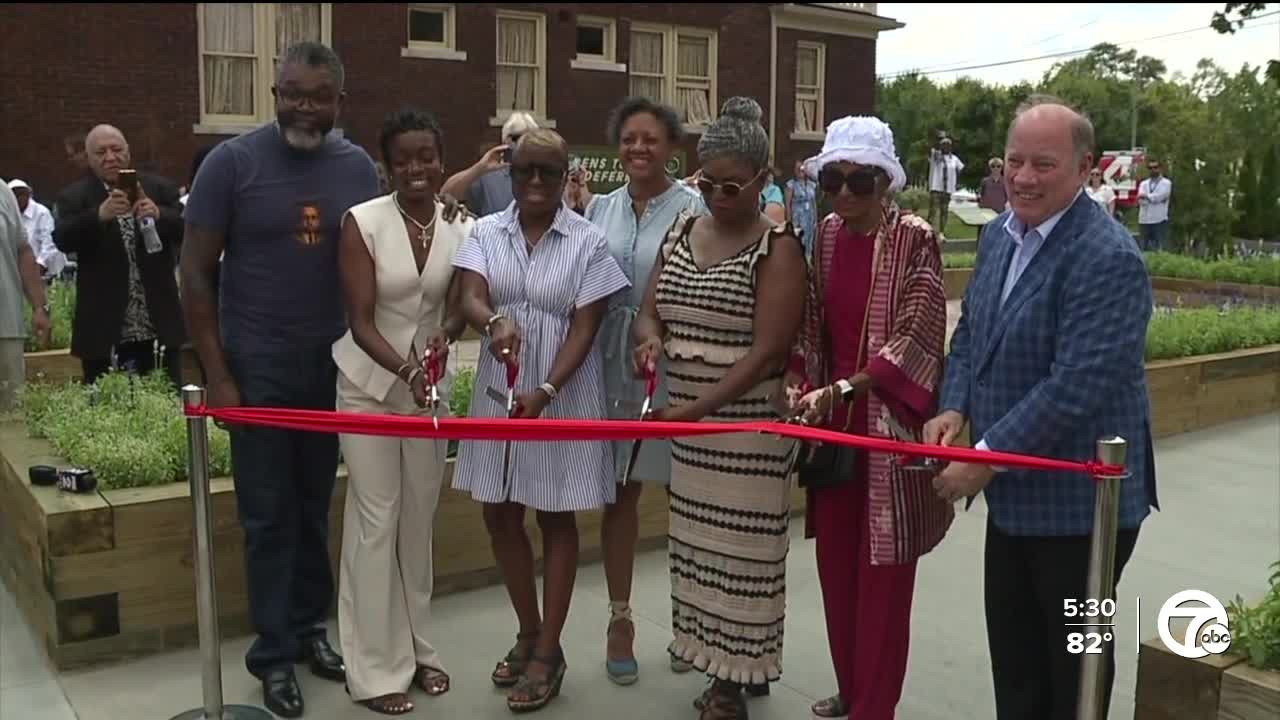DETROIT (WXYZ) — Today, the city of Detroit cut the ribbon on a new educational park on the east side. It sits next to the historic home of the late Dr. Ossian Sweet at the corner of Garland and Charlevoix.
Watch Darren Cunningham's video report:
The home played a significant role in America's fight for racial justice.
Dr. Sweet and his wife, Gladys, bought their home 100 years ago in what was then an all-white neighborhood. In September 1925, an angry mob gathered outside their home.
Sweet, his family and friends, defended themselves from a room upstairs. They shot and killed a man in the angry crowd.
An all-white jury found Sweet not guilty. Charges against the other ten defendants were dropped.
Watch Carolyn Clifford's 2013 story on the trial:
The new educational park helps tell the story. Dr. Sweet's niece, Jacqueline Spotts, tells 7 News Detroit it's an honor.
When asked what she hopes people take away from visiting the park, Spotts replied, "That although you may not see it, but always fight for equality because you deserve that."

She said decades ago, her uncle had difficulty selling the home. Daniel Baxter's parents ended up buying it from Dr. Sweet.
Baxter, the founder of the Dr. Ossian H. Sweet Foundation, said he learned of the home's significance when he was 10 years old and developed a vision nearly 30 years ago to one day revitalize the home. Then came the vision for the park.
"This is American history. It's not just Black history," Baxter says. "It has so many key people, these significant heavy weights of the 1920s, you've got Clarence Darrow, Frank Murphy, Web Dubois, James Walden Johnson, Walter White, all of these people who made significant contributions to social and political change that played a role in the incident that happened in 1925."

Baxter said Mayor Mike Duggan had a role in getting the historic marker placed at the house as part of the preservation process.
"When I was a Wayne County Prosecutor, 50 years after the trial, people were still embarrassed that the prosecutor's office put the Sweet family on trial," Duggan says. "What happened here had the eyes of the country, and it opened up neighborhoods across America for African American families who wanted to move to wherever they wanted to live."

The city also renovated homes in the immediate vicinity to help further preserve the essence of the neighborhood during the 1920s.
"The biggest challenge was those houses around here were going to be demolished,' Duggan says. "I said you can't have a historic experience about what the sweet family was fighting to protect if you can't feel how the neighborhood was, and so as you can see, we beautifully restored the four houses around here to the way they looked in 1925."
Rayshaun Landrum, who lives in the neighborhood, is a landscape architect who worked on the design of the park with the help of community input.
"Here we have a quote, 'What happens to a dream deferred?' I think that's like the major information that needs to be gathered within this project because Dr. Sweet wanted to move into a neighborhood to make his family's life better. So with that, it's fight for your dreams, and you never know how impactful they are," Landrum said.





